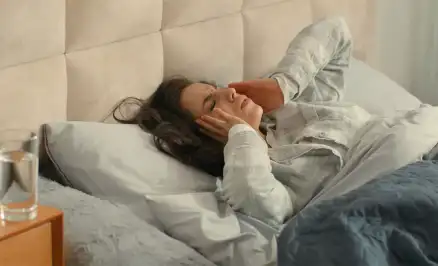
Sleep apnea is a sleep-related disorder affecting an individual’s sleep quality and life. Around 5% of Australians suffer from this problem, which is more commonly found in older men. Most of the cases go undiagnosed because of the lack of awareness about this condition. However, it should not be overlooked or neglected because severe cases can lead to serious health issues like heart troubles, strokes, diabetes and high blood pressure.
In simple terms, sleep apnea can be described as breaks in breathing while sleeping that make the person wake up gasping for air. It disrupts their restful time at night and affects their daytime, too. Thus, getting a sleep consultation for a correct diagnosis is best if there are any sleep-related troubles. Let us help you increase your understanding of sleep apnoea by shedding light on its causes, symptoms and treatment. It can help detect the problem at the earliest.What is Sleep Apnea?
Sleep apnea is interruptions in breathing while sleeping due to the blockage of the airways or the brain failing to control breathing. The interruptions occur several times at night, making the person lose sleep and feel exhausted during the day. Snoring is a common symptom of sleep apnea, but everyone who snores does not have a sleeping disorder. Snoring can also occur because of nasal congestion, large tonsils or sleeping on the back. It is vital to opt for a test for sleep to diagnose sleep apnea and get a sleep consultation for effective treatment.Types of Sleep Apnea
Sleep apnoea can be of the following three types:Obstructive Sleep Apnea(OSA)
It is the most common type of sleeping disorder that occurs when the throat muscles are relaxed and obstruct the airway. It can make the individual stop breathing for ten seconds and leads to gasping or restlessness while sleeping.Central Sleep Apnea(CSA)
The second type of sleep apnea, known as central sleep apnea (CSA), happens when the brain doesn’t send the right signals to the chest muscles that are responsible for breathing. It is common in men who are 60 or older who have a heart or neurological condition.Complex Sleep Apnea
The third form of sleep apnea is known as treatment-emergent central sleep apnea or complex sleep apnea. It is a condition when an individual has both OSA and CSA or when a person with OSA develops CSA during the treatment. A test for sleep can help get the correct diagnosis in this case.Causes of Sleep Apnea
Various factors can contribute to the development of sleep apnea in individuals, such as:- Obesity leads to the accumulation of fat around the upper airway that restricts breathing
- A narrow throat or enlarged tonsils and adenoids can also obstruct the airways in children
- Older men are more susceptible to this sleep-related disorder
- Many people develop sleep apnea because of genetics and family history
- Excessive alcohol consumption before going to bed can increase the risk of sleep apnea because it relaxes the throat muscles
- Individuals suffering from heart troubles or those who have survived a stroke are more likely to develop sleep apnea
Common Symptoms of Sleep Apnea
Sleep apnoea can be detected by identifying the common symptoms listed below:- Paused breathing for a few seconds while sleeping
- Waking up gasping for breath or feeling choked at night
- Snoring and disturbed sleep
- Extreme tiredness and sleepiness during the day
- Headaches in the morning
- Sudden mood swings and increased irritability
- A lack of focus and concentration at work
